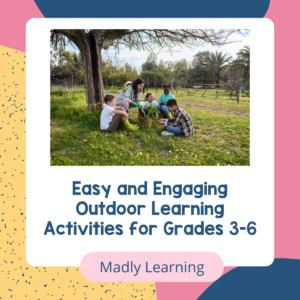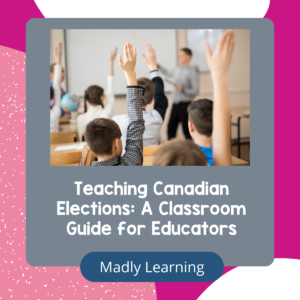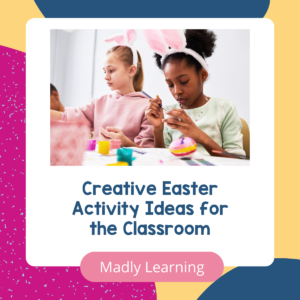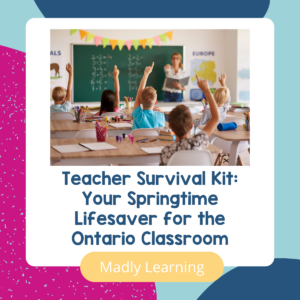Do you find it challenging to spark curiosity and engage students in meaningful discussions at the start of a new unit? Many teachers struggle, especially when introducing science and social studies topics. The solution? Using wonder walls to facilitate inquiry-based classroom discussions! This blog will guide you through using wonder walls to kick off new units, encourage student inquiry, and create an engaging learning environment. Plus, we’ll showcase the wonder wall activities included in our Ignited Lessons!

The Power of the First Lesson
The first lesson of a new unit sets the tone for the entire topic. It’s your chance to captivate students and spark excitement about what’s to come.
A strong start:
- Introduces students to the topic in a way that piques their interest.
- Helps you assess what students already know and what they wonder about.
- Provides a foundation for inquiry-based learning throughout the unit.
If you need help planning your unit, check out this blog post on planning a social studies unit for practical tips.
Inquiry-Based Classroom Discussions
Inquiry-based discussions are essential for engaging students in critical thinking and exploration.
Here’s why they matter:
- Encourage curiosity: Students ask their own questions, driving their learning journey.
- Promote collaboration: Students share ideas and build on each other’s thoughts.
- Develop critical thinking: Inquiry requires students to analyze, evaluate, and synthesize information.
To conduct effective inquiry-based classroom discussions:
- Present a provocation, such as an image, artifact, or video.
- Use guiding questions to encourage students to think deeply about the topic.
- Record students’ observations, questions, and thoughts for future exploration.
Inquiry Questions to Probe Students
When using a wonder wall, start with three simple prompts to evoke inquiry-based classroom discussions:
- We Wonder: What questions do students have about the topic?
- We Know: What prior knowledge can students share?
- We Think: What are students’ initial hypotheses or predictions?
In Ignited Lessons, every unit starts with a wonder wall activity using these prompts. These worksheets help organize student thoughts and serve as a foundation for inquiry throughout the unit. Plus, they will help you as the teacher facilitate inquiry-based classroom discussions!
Using Wonder Walls to Evoke Inquiry-Based Classroom Discussions
Setting Up Your Wonder Wall
Begin by preparing your wonder wall with engaging visuals and prompts related to your new unit. These could include pictures, artifacts, or key terms that provoke curiosity. Place them on a bulletin board, trifold board, or a dedicated wall space. Ensure the display is organized but leaves room for students’ contributions throughout the unit.
- What Teachers Should Do: Curate artifacts or images of artifacts that represent key themes or ideas for the unit. Use colour and visuals to make the display inviting.
- What Students Should Do: Encourage students to explore the materials on the wonder wall and think about what they notice, connect with, or question.
Sparking Curiosity with Prompts
Start your lesson by introducing the wonder wall and guiding students to observe and interact with it. Use prompts such as: “What do you notice?”, “What do you wonder?” and “What connections can you make?” These questions encourage students to share their prior knowledge and formulate questions.
- What Teachers Should Do: Facilitate a class discussion around the wall. Use open-ended questions to draw out students’ thoughts and help them connect ideas.
- What Students Should Do: Observe the wonder wall and respond to the prompts. Share their observations, questions, and connections with the class.
Encouraging Student Reflection
Provide students with tools to document their thinking, such as sticky notes, worksheets, or journals. Ask them to record what they know, what they wonder, and what they think they will learn during the unit. This documentation can later be added to the wonder wall to enrich the display and keep it dynamic.
- What Teachers Should Do: Distribute materials for students to record their reflections. Guide them to contribute their notes to the wonder wall in an organized way.
- What Students Should Do: Write down their observations, questions, and ideas. Add their contributions to the wonder wall, helping to build a collaborative learning resource.
Building Discussion Around Student Contributions
Once students have shared their initial thoughts, facilitate a deeper discussion to explore emerging questions and themes. Group similar questions together on the wonder wall and identify key topics to investigate further. Use this process to collaboratively establish learning goals for the unit.
- What Teachers Should Do: Organize student contributions into categories. Use these categories to develop inquiry paths and align them with the curriculum.
- What Students Should Do: Participate in discussions to refine their questions and identify key themes. Offer ideas for how the class might investigate these topics.
Maintaining the Wonder Wall
As the unit progresses, revisit the wonder wall regularly. Add new questions, connections, and learning outcomes to keep it dynamic. Encourage students to reflect on how their questions have been answered or evolved.
- What Teachers Should Do: Update the wonder wall to reflect ongoing learning. Highlight connections between students’ initial questions and the knowledge gained during the unit.
- What Students Should Do: Revisit their questions and reflect on what they’ve learned. Add new ideas or insights to the wall as the unit develops.

A wonder wall is a living display of student learning that evolves throughout the unit. To create an effective wonder wall:
- Use a trifold board or bulletin board to display pictures, artifacts, and student questions.
- Group related questions and ideas together to create a cohesive visual.
- Incorporate standards, learning goals, and assessment criteria to align with curriculum objectives.
For more details, check out this blog post and YouTube video for step-by-step instructions and examples.
Ready To Start Inquiry-Based Classroom Discussions?
Wonder walls are an excellent way to spark inquiry and facilitate meaningful inquiry-based classroom discussions. By using them at the start of your science or social studies units, you can activate students’ curiosity and guide their learning journey. Ready to simplify your planning process? Join the Ignited Lessons Club to access ready-made wonder wall activities, worksheets, and more! Let’s make inquiry-based learning easy and exciting for your classroom.











